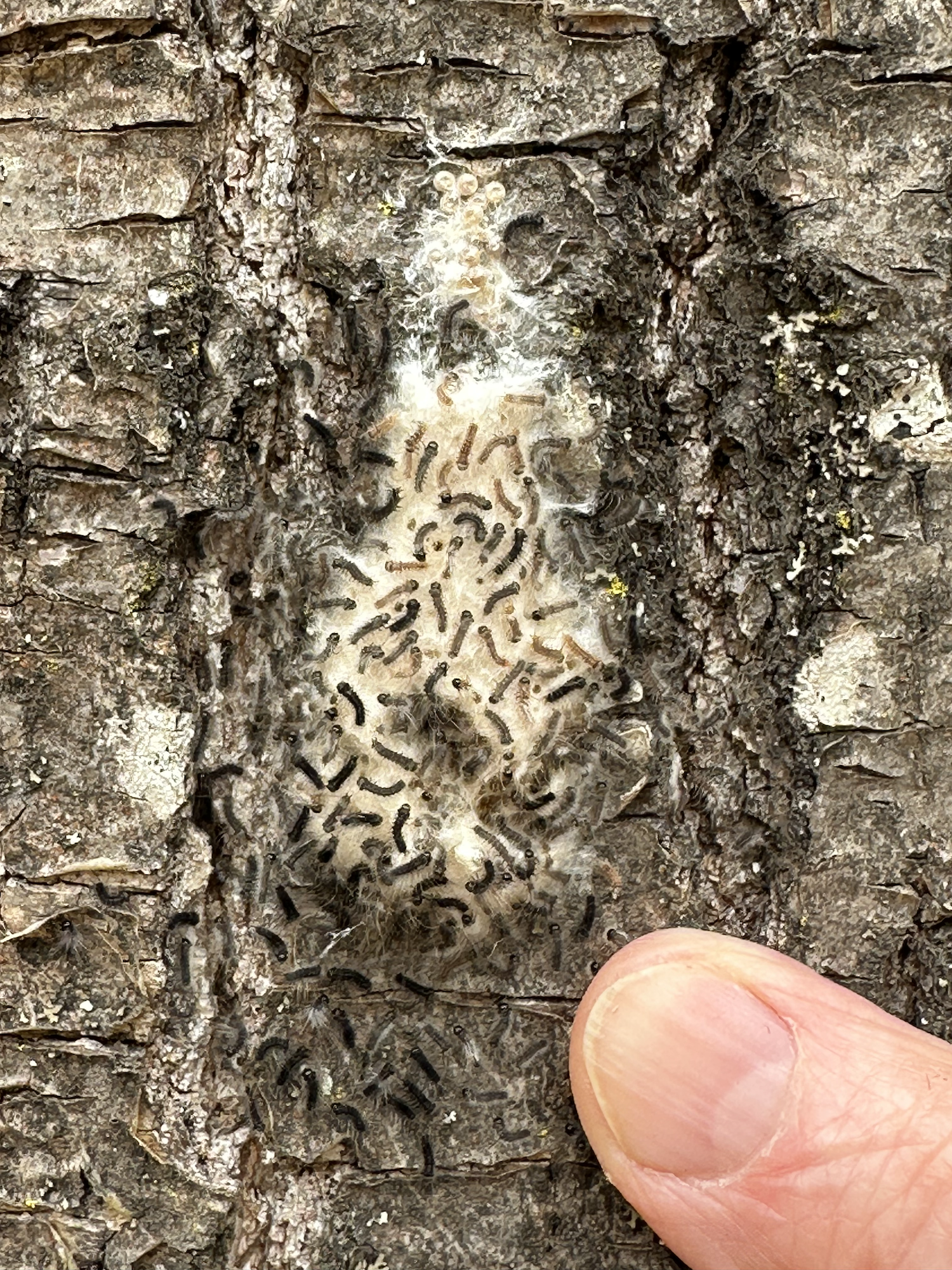Spongy Moth Update, Late July
/By Kathy Kromroy
Adult female spongy moth laying an egg mass
Spongy moth pupae
I just returned to Madeline after a week at home in the Twin Cities. The spongy moth caterpillar activity seems to have slowed and quieted compared to before I left, with some caterpillars forming pupae. They have eaten the leaves of many trees and shrubs of a variety of species, and some areas of the island appear completely defoliated. In areas where the caterpillar populations were highest, even conifers have been defoliated.
While it may seem like a waste of time at this point, I encourage you to take action to help reduce the numbers of adults that will emerge from the pupae, and thus the number of potential caterpillars next year. Read or follow the link below, from:
Management guide for homeowners – Spongy Moth (Lymantria dispar) in Wisconsin University of Wisconsin – Madison, Division of Extension
JULY: “Crush & brush” pupae and adult females
Spongy moth (Lymantria dispar) is immobile during its pupal stage and can be crushed or brushed into a container of soapy water to prevent them from making it to the adult stage. If caterpillars have been abundant in your area, do some thorough scouting to check for the brownish pupae (3/4 – 2 1/2 inches long), which are often tucked away in protected spots.
Adult spongy moths appear within two weeks. Adult females (pale colored) have limited mobility and can also be crushed or brushed into a container in soapy water. Since each female can easily lay upwards of 1,000 eggs, eliminating adult female moths could help prevent future problems!
Note: Adult female spongy moths possess a long-lasting chemical pheromone that strongly attracts male spongy moths. Getting this pheromone on your skin, clothing, or objects such as gardening tools can make contaminated surfaces attractive to male moths. Using a disposable item (stick, etc.) to crush adult females can be helpful in this regard.



















